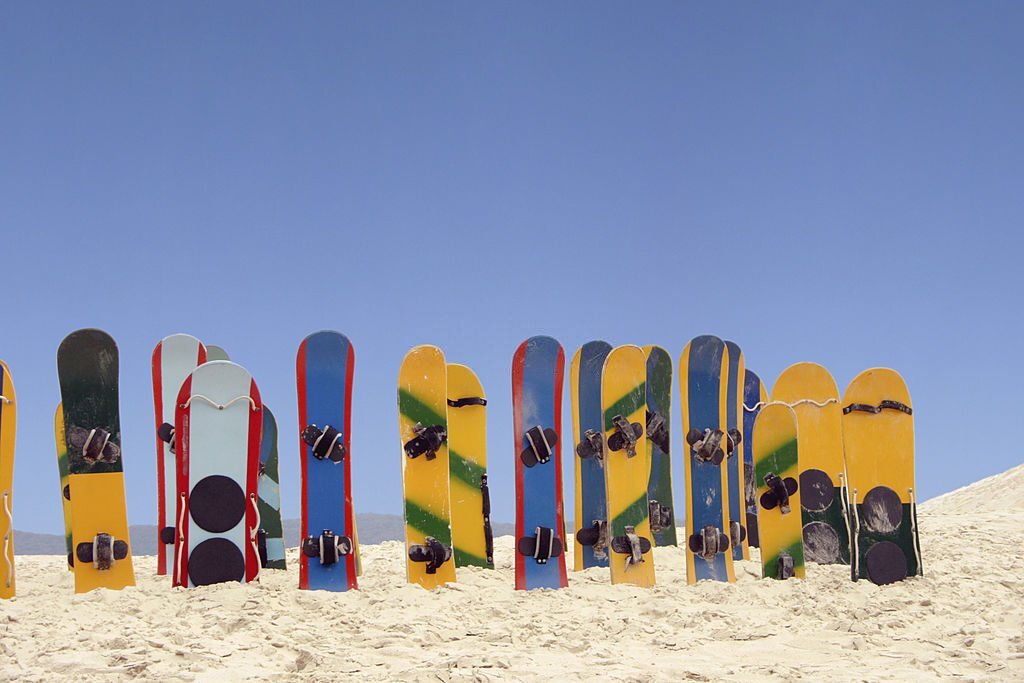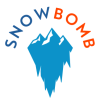Following are the Different Types of Snowboards
In this post, we will discuss the different types of snowboards and their uses. Since the first snowboard was developed in 1965 there have been drastic improvements including different types of snowboards. The technology will keep improving with time and these are the current types of boards available on the market today.
- All Mountain Snowboards
- Freeride/Backcountry Snowboards
- Freestyle/ Park Boards
- Backcountry Snowboards
- Powder Snowboards
- Park Snowboards
What should I look for when buying a snowboard
When it comes to buying a snowboard, there are a few things you’ll want to think about. First, consider your skill level. If you’re a beginner, you’ll definitely want to look for a board that is more forgiving and easier to control. On the other hand, if you’re an advanced rider, you’ll want a board that is more responsive and agile. Next, think about your riding style. Do you prefer to ride in the park, or do you like to venture off into the backcountry? Different snowboards are better suited for different types of terrain, so make sure to choose one that aligns with your preferred riding style. You’ll also want to consider your weight and height, as snowboards are designed to perform best within a specific weight range. And of course, don’t forget to factor in your budget – snowboards can range in price from a few hundred dollars to over a thousand. Lastly, consider the flex of the snowboard. The flex refers to how easily the board bends, and a board with a softer flex is generally more forgiving and easier to control, while a board with a stiffer flex is more responsive and better for high-speed carving. Keep these things in mind as you shop for your new snowboard, and you’ll be sure to find one that’s perfect for you.

All Mountain Snowboards
All mountain Snowboards are perfect for those who are looking to do a bit of everything. They are meant to be versatile and can be used for chilling on the groomers, riding some freestyle in the park, or if you want to do a bit of off-piste riding. This is the best type of snowboard for beginners because this is a board that can be good for any kind of riding. However, if you are more experienced and interested in a specific type of riding then you will want a board that is suitable for what you will be doing.
The technical aspects of these boards include a twin tip (“true twin”) the profiles do vary between camber and rocker. For beginners, I would suggest using a camber profile (most rental shops will carry these). If you are a bit more experienced, go with a traditional rocker.
These are the best mountain snowboards for 2022/23
https://snowboardingprofiles.com/the-top-all-mountain-snowboards-my-top-10
Freeride Snowboards
Yes, a freeride snowboard is different from an all-mountain snowboard. A freeride snowboard is ideal for those who are looking to charge down off-piste terrain in the deep snow. This can only be done on freeride snowboards. These are generally used by more experienced riders to give them more control at high speeds on off-piste terrain.
They are generally stiffer with a flex rating of 7-10 (the highest possible). Freeride boards are longer than all mountains and have better edge control to help you with riding fast. They have a directional hybrid camber profile, which helps to float through the powder.
These are the best freeride snowboards:
https://snowboardingprofiles.com/the-top-freeride-snowboards-my-top-5
Backcountry Snowboards
For those looking to access the backcountry and already have the required knowledge and avalanche gear. Experienced riders will want a good backcountry snowboard that can handle what the backcountry has to offer. Snowboarders who go into the backcountry either split board or strap a freestyle or powder snowboard to the back of their packs and snowshoe to access terrain. Splitboards make it easy to split the board in half and use it as skis to skin up a mountain. If you are going to access the backcountry by snowshoeing you can take a freeride board with you (read above). You can buy different types of split boards, and the profile of split boards will vary, with directional, directional twin, or true twin. The width and stiffness will also vary but they are generally stiffer and wider. These are the best-split boards:
https://www.switchbacktravel.com/best-splitboards
Powder Snowboards
If you are a powder hunter then you will want a powder board and having a powder board on a pow day makes all the difference. These boards are a little wider so you can float in the snow when it is deep.
These are the best powder boards:
https://www.evo.com/en-ca/reviews/snowboard/best-powder-snowboards
Park Snowboards
If you are a park rat and enjoy ripping some park laps then you will want a park board. Park boards are usually a bit lighter and more flexible than regular snowboards, perfect for some tricks. They will also be able to hit the different features that you will see at a terrain park.
There are also specific park snowboards for different features so the specs of these snowboards will vary. Generally, park boards often have softer flex to allow for stomping landings or to grab your board mid-air. To help with riding the switch in the park, these boards will have a true twin. The board’s length will be slightly shorter than normal to make it easier for riders to maneuver in the park and to be able to perform tricks more easily. The park board will be a little wider than normal to help with balance and landing jumps.
These are the best park snowboards
https://www.boardoftheworld.com/best-freestyle-park-snowboards/
Snowboard size chart
Here is a table with some general snowboard size guidelines based on weight and height:
| Weight (lbs) | Height (ft/in) | Snowboard Size (cm) |
|---|---|---|
| 100 or less | 4’10” or less | 120-140 |
| 100-120 | 4’11” – 5’2″ | 130-145 |
| 120-140 | 5’3″ – 5’6″ | 135-150 |
| 140-160 | 5’7″ – 5’9″ | 140-155 |
| 160-180 | 5’10” – 6’0″ | 145-160 |
| 180-200 | 6’1″ – 6’3″ | 150-165 |
| 200-220 | 6’4″ or more | 155-170 |
Please note that these are general guidelines and the best size for you may vary depending on your personal preferences and the type of riding you plan to do. It’s always a good idea to consult with a local snowboard shop or experienced rider to get a more personalized recommendation.
I hope you enjoyed reading this and that this helps you decide what kind of snowboard to buy.
Written By: Aidan Kennedy

 About the author
About the author